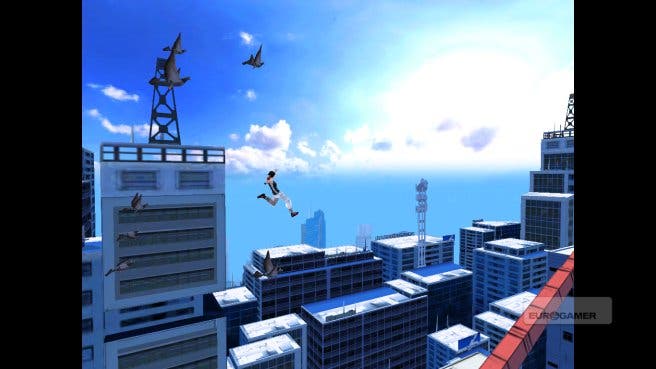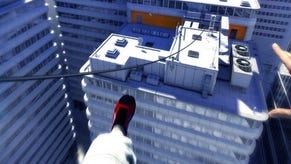Mirror's Edge for iPad
Shine on.
If you discount the 1348 counts of grievous bodily shovelware to date, the iPad's a pretty decent gaming platform. Where else can you re-purchase shiny "HD" versions of all your favourite iPhone games at between three and six times the price despite usually being exactly the same game? Those pixels aren't going to upscale themselves, you know.
The point we're trying to make is that it'd be really nice if we could just have a few exclusive titles to show off to make us look less idiotic for splurging all the cash we don't have on something we don't yet need. Titles, in fact, like Mirror's Edge, the sole impressive new addition to the gaming scene since Apple's slab debuted in the States.
Altogether a more free-flowing Parkour experience than DICE's original ever was, IronMonkey has created a breathlessly enjoyable experience that strips back the gameplay in a manner reminiscent of the relentless freneticism of cult 2D platformer Canabalt.

One thing that hits you immediately about the game is its quite beautiful "2.5D" interpretation of DICE's gleaming urban dystopia. With its striking use of primary colours, contrasting against the tower blocks and fresh blue sky, there have been fewer more appealing backdrops in a modern videogame. Complemented by the satisfying fluidity of Faith's animation and the intricate detail of the scenery skirting your peripheral vision, it's tailor-made for the iPad.
A rather superfluous plot chugs along trying its best to set the scene about "runners" and shady corporations, but there's really only one thing you need to know: Faith's on the run from bad men, and you've got to prod her to her destination fast. Set across 14 hazard-strewn environments, you must dash, jump, wall-run, slide, zip-line, disarm and karate-kick your way around urban rooftops and warehouses.

Blessed with superbly intuitive touch controls, Mirror's Edge for iPad has thrown out the offensively useless fake joypad method entirely, replaced instead by a simple suite of context-sensitive taps and swipes that become second nature in a matter of minutes. With a deft left or right slide of your finger across the screen, Faith breaks into a sprint in the appropriate direction, while a simple tap instructs her to jump. Sliding underneath narrow gaps while running demands a downward sweep, while scaling buildings can be pulled off with an upward sweep.
Some of the context-driven subtleties take a little bit of time to sink in, such as how to time wall jumping and wall running effectively, but some generous checkpointing goes a long way to eliminating most of the frustration from such a trial-and-error-heavy game. That said, there are occasions where you're inclined to think that the level designers dropped the ball entirely, with some poor signposting and murderous difficulty spikes conspiring to chip away at your initial admiration for brief spells.



.jpg?width=291&height=164&fit=crop&quality=80&format=jpg&auto=webp)





